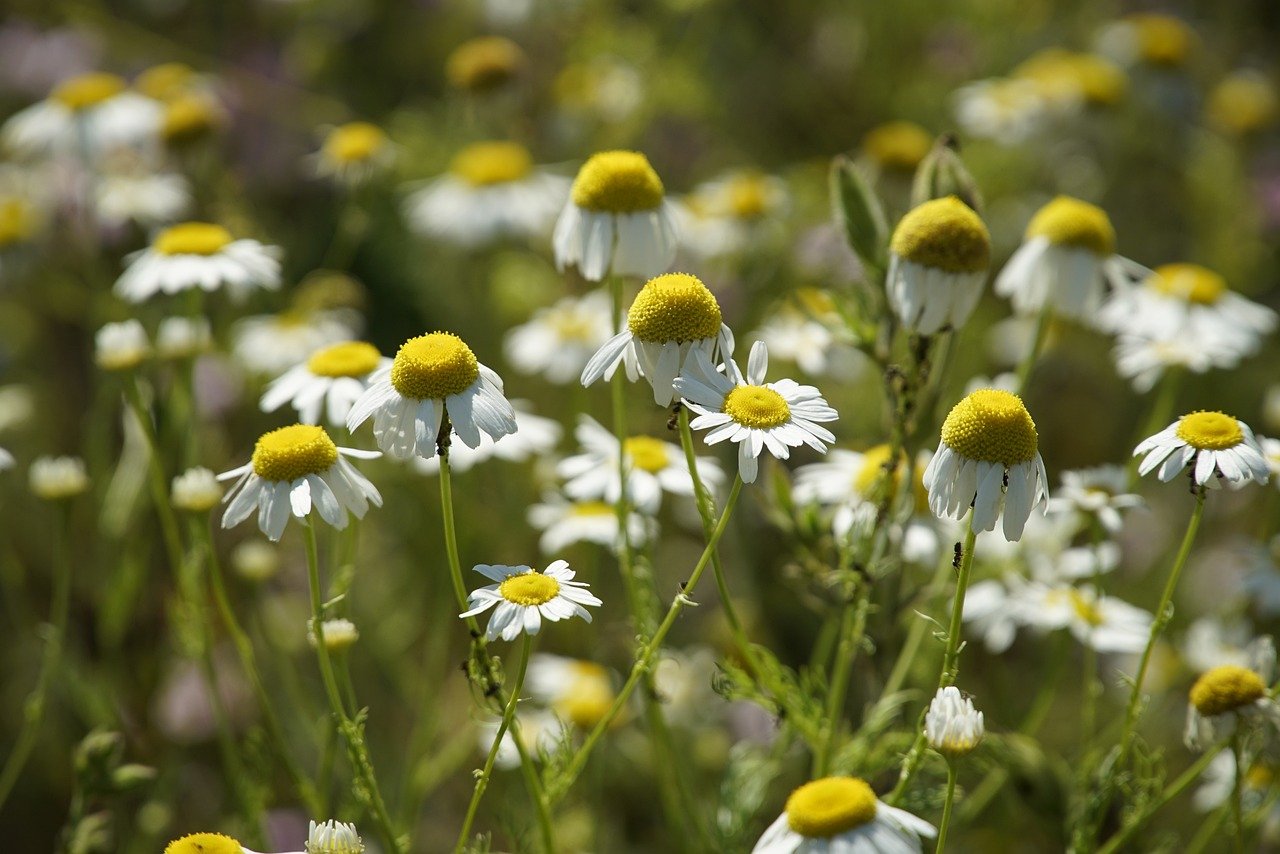What Should You Plant Next to Chamomile?
Chamomile (Matricaria chamomilla or Chamaemelum nobile) is a delightful herb known for its fragrant, daisy-like flowers and soothing properties.
It’s a favorite in herbal medicine and tea, and many gardeners love to cultivate it for its aesthetic and aromatic qualities. But what should you plant next to chamomile, and is chamomile a good companion plant for your garden?
The Benefits of Companion Planting
Before we delve into specific companion plants for chamomile, let’s briefly discuss why companion planting is essential. Companion planting is a gardening technique where you plant certain species together to enhance growth, deter pests, and promote overall garden health. Some plants have natural affinities for each other and can work together to create a harmonious and thriving garden ecosystem.
Chamomile, with its anti-fungal and pest-repelling properties, can be an excellent addition to your garden when strategically placed alongside compatible plants. So, what are the best companions for chamomile?
Ideal Companions for Chamomile
- Mint (Mentha spp.) – Mint and chamomile are excellent garden companions. Mint’s strong aroma helps repel pests that might harm chamomile, and both plants enjoy similar growing conditions, including well-draining soil and partial sunlight. Just be cautious when planting mint, as it can become invasive. Consider growing it in containers near your chamomile to prevent it from taking over.
- Basil (Ocimum basilicum) – Basil and chamomile thrive together due to their shared preference for well-drained soil and ample sunlight. Basil can also help deter certain insects that might harm chamomile. Plus, the aromatic combination of chamomile and basil can create a pleasant sensory experience in your garden.
- Lavender (Lavandula spp.) – Lavender is another great companion for chamomile. Both plants have calming and soothing properties, making them an excellent addition to a relaxation or meditation garden. Lavender’s fragrance can also help deter garden pests.
- Dill (Anethum graveolens) – Dill pairs well with chamomile, as it attracts beneficial insects like ladybugs and parasitic wasps, which can help control aphids and other pests that might plague your chamomile. Dill and chamomile also share similar soil and sunlight requirements.
- Calendula (Calendula officinalis) – Calendula, also known as pot marigold, is not only visually appealing but also beneficial for your chamomile plants. It can help deter certain pests and attract pollinators, enhancing chamomile’s growth and overall health.
Plants to Avoid Near Chamomile
While there are many compatible companions for chamomile, some plants should be kept at a distance to prevent competition or potential harm. Avoid planting the following species near your chamomile:
- Parsley (Petroselinum crispum) – Parsley and chamomile can compete for nutrients and space. Keep them separated to ensure both plants thrive.
- Onions (Allium spp.) and Garlic (Allium sativum) – These alliums can inhibit the growth of chamomile and should be planted elsewhere in your garden.
- Fennel (Foeniculum vulgare) – Fennel can be invasive and may overshadow chamomile, so it’s best to plant them separately.
Is Chamomile a Good Companion Plant?
Chamomile (Matricaria chamomilla or Chamaemelum nobile) is a delightful herb known for its fragrant, daisy-like flowers and soothing properties. It’s a favorite in herbal medicine and tea, and many gardeners love to cultivate it for its aesthetic and aromatic qualities. But is chamomile a good companion plant for your garden? In this article, we’ll explore the world of chamomile companionship and evaluate its suitability as a companion plant.
The Benefits of Companion Planting
Before we delve into whether chamomile makes a good companion plant, let’s briefly discuss why companion planting is essential. Companion planting is a gardening technique where you plant certain species together to enhance growth, deter pests, and promote overall garden health. Some plants have natural affinities for each other and can work together to create a harmonious and thriving garden ecosystem.
Chamomile as a Companion Plant
Chamomile is indeed a good companion plant in many gardening scenarios. Here are several reasons why:
- Pest Repellent: Chamomile emits a pleasant, apple-like fragrance that deters many garden pests, including aphids and flies. Planting chamomile near susceptible crops can help protect them from infestations.
- Nutrient Accumulator: Chamomile’s deep taproot can help bring up nutrients from the soil’s lower layers, making them available to neighboring plants with shallower roots.
- Attracts Beneficial Insects: Chamomile’s small, daisy-like flowers attract beneficial insects like hoverflies and parasitic wasps, which help control garden pests.
- Improves Soil Quality: As chamomile decomposes, it contributes organic matter to the soil, enhancing its structure and fertility.
- Complementary Growth: Chamomile’s low, spreading growth habit can serve as a ground cover, reducing weed competition and conserving soil moisture for nearby plants.
